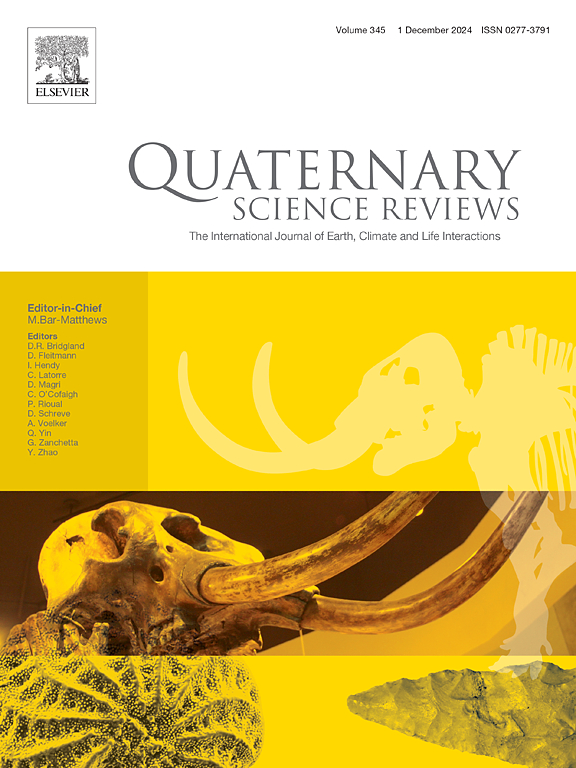A review on Pyrenean Pleistocene leopards paleoecology, paleobiogeography and adaptative convergences with snow leopards
IF 3.2
1区 地球科学
Q1 GEOGRAPHY, PHYSICAL
引用次数: 0
Abstract
—In this study, we review and analyze one of the most scarcely recorded carnivorans of the European Quaternary, the leopard (Panthera pardus), focusing on its presence in the Pyrenean Mountain range. Our data reveal a progressive increase in both the number of records and the body mass of leopards throughout the Pleistocene, beginning with the earliest specimens from the Early Pleistocene. Our analysis also demonstrated reduced sexual dimorphism compared to modern leopards, as well as a preference for mountain environments. Additionally, we identified several cranial and post-cranial anatomical convergences with snow leopards, which were also sporadically recorded in Europe. These convergences, discussed in detail, may be the result of interspecific competition, environmental pressures, or habitat preferences.
比利牛斯更新世豹的古生态学、古生物地理学及其与雪豹的适应性趋同
-在这项研究中,我们回顾并分析了欧洲第四纪记录最稀少的食肉动物之一--豹(Panthera pardus),重点研究了它在比利牛斯山脉的存在。我们的数据显示,从早更新世最早的标本开始,在整个更新世,豹的记录数量和体重都在逐渐增加。我们的分析还表明,与现代豹子相比,豹子的性二型减少了,而且更喜欢山区环境。此外,我们还发现了雪豹的几种颅骨和颅后解剖学趋同性,欧洲也有零星记录。我们将详细讨论这些相似之处,它们可能是种间竞争、环境压力或栖息地偏好的结果。
本文章由计算机程序翻译,如有差异,请以英文原文为准。
求助全文
约1分钟内获得全文
求助全文
来源期刊

Quaternary Science Reviews
地学-地球科学综合
CiteScore
7.50
自引率
15.00%
发文量
388
审稿时长
3 months
期刊介绍:
Quaternary Science Reviews caters for all aspects of Quaternary science, and includes, for example, geology, geomorphology, geography, archaeology, soil science, palaeobotany, palaeontology, palaeoclimatology and the full range of applicable dating methods. The dividing line between what constitutes the review paper and one which contains new original data is not easy to establish, so QSR also publishes papers with new data especially if these perform a review function. All the Quaternary sciences are changing rapidly and subject to re-evaluation as the pace of discovery quickens; thus the diverse but comprehensive role of Quaternary Science Reviews keeps readers abreast of the wider issues relating to new developments in the field.
 求助内容:
求助内容: 应助结果提醒方式:
应助结果提醒方式:


